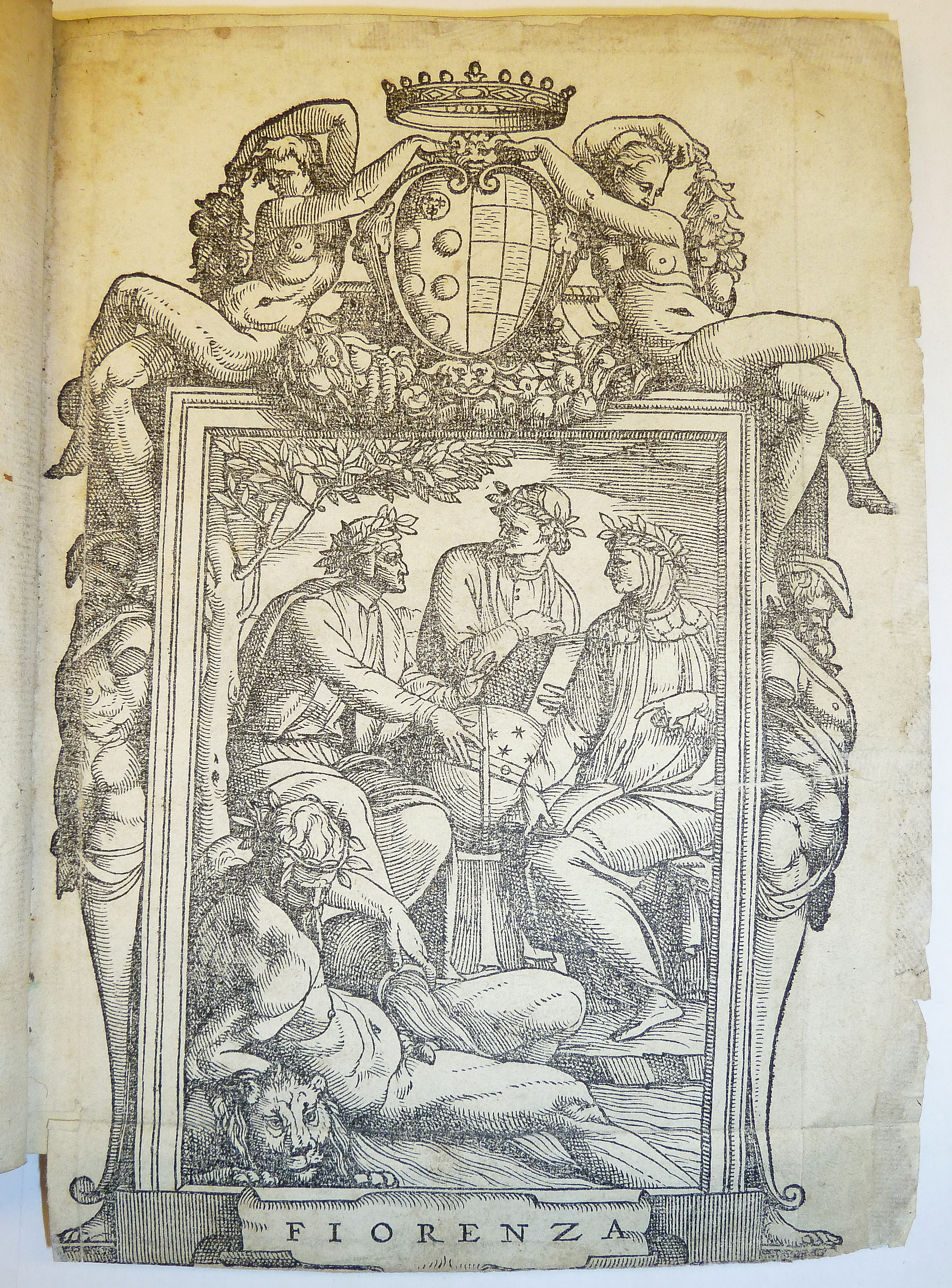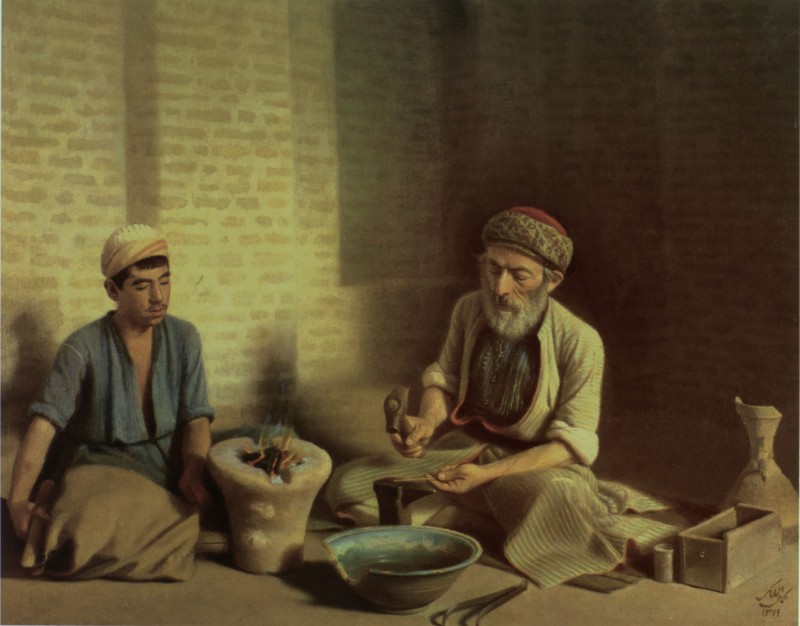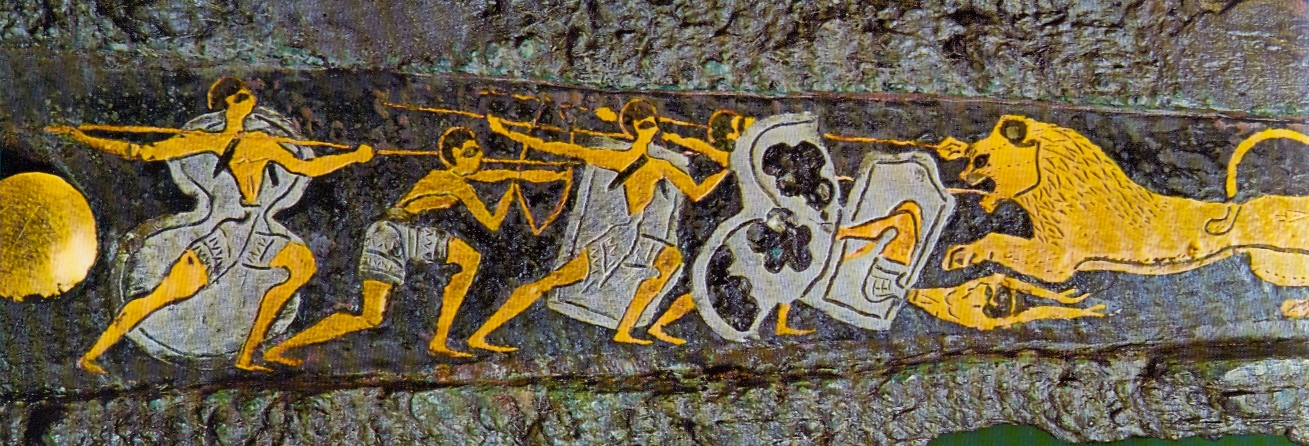|
Giovanni Battista Palumba
Giovanni Battista Palumba, also known as the Master I.B. with a Bird (or the Bird etc.), was an Italian printmaker active in the early 16th century, making both engravings and woodcuts; he is generally attributed with respectively 14 and 11 of these. He appears to have come from northern Italy, but later worked in Rome. He specialized in subjects from classical mythology, as well as the inevitable religious subjects. Despite his relatively small output, he was a sophisticated artist, whose style shows a number of influences and changes, reflecting awareness of the currents in artistic style at the start of the High Renaissance. The signed prints are usually dated to around 1500–1511. His earlier name comes from the monogram with which most of his prints are signed, the initials ''IB'' followed by a small image of a pigeon-like bird. The Italian word ''palumbo'' means 'pigeon' (the Latin name of the common wood pigeon is ''Columba palumbus''), and in Latin the initial for ''G ... [...More Info...] [...Related Items...] OR: [Wikipedia] [Google] [Baidu] |
Renaissance Humanism
Renaissance humanism was a revival in the study of classical antiquity, at first in Italy and then spreading across Western Europe in the 14th, 15th, and 16th centuries. During the period, the term ''humanist'' ( it, umanista) referred to teachers and students of the humanities, known as the , which included grammar, rhetoric, history, poetry, and moral philosophy. It was not until the 19th century that this began to be called ''humanism'' instead of the original ''humanities'', and later by the retronym ''Renaissance humanism'' to distinguish it from later humanist developments. During the Renaissance period most humanists were Christians, so their concern was to "purify and renew Christianity", not to do away with it. Their vision was to return ''ad fontes'' ("to the sources") to the simplicity of the New Testament, bypassing the complexities of medieval theology. Under the influence and inspiration of the classics, humanists developed a new rhetoric and new learning. Some scho ... [...More Info...] [...Related Items...] OR: [Wikipedia] [Google] [Baidu] |
Goldsmith
A goldsmith is a Metalworking, metalworker who specializes in working with gold and other precious metals. Nowadays they mainly specialize in jewelry-making but historically, goldsmiths have also made cutlery, silverware, platter (dishware), platters, goblets, decorative and serviceable utensils, and ceremonial or religious items. Goldsmiths must be skilled in forming metal through file (tool), filing, brazing, soldering, sawing, forging, Casting (metalworking), casting, and polishing. The trade has very often included jewelry-making skills, as well as the very similar skills of the silversmith. Traditionally, these skills had been passed along through apprenticeships; more recently jewelry arts schools, specializing in teaching goldsmithing and a multitude of skills falling under the jewelry arts umbrella, are available. Many universities and junior colleges also offer goldsmithing, silversmithing, and metal arts fabrication as a part of their fine arts curriculum. Gold Com ... [...More Info...] [...Related Items...] OR: [Wikipedia] [Google] [Baidu] |
Niello
Niello is a black mixture, usually of sulphur, copper, silver, and lead, used as an inlay on engraved or etched metal, especially silver. It is added as a powder or paste, then fired until it melts or at least softens, and flows or is pushed into the engraved lines in the metal. It hardens and blackens when cool, and the niello on the flat surface is polished off to show the filled lines in black, contrasting with the polished metal (usually silver) around it. It may also be used with other metalworking techniques to cover larger areas, as seen in the sky in the diptych illustrated here. The metal where niello is to be placed is often roughened to provide a key. In many cases, especially in objects that have been buried underground, where the niello is now lost, the roughened surface indicates that it was once there. Statistical consideration Niello was used on a variety of objects including sword hilts, chalices, plates, horns, adornment for horses, jewellery such as bra ... [...More Info...] [...Related Items...] OR: [Wikipedia] [Google] [Baidu] |
Saluzzo
Saluzzo (; pms, Salusse ) is a town and former principality in the province of Cuneo, in the Piedmont region, Italy. The city of Saluzzo is built on a hill overlooking a vast, well-cultivated plain. Iron, lead, silver, marble, slate etc. are found in the surrounding mountains. On January 1, 2017 it had a population of 16,968. Saluzzo was the birthplace of the writer Silvio Pellico and of typographer Giambattista Bodoni. History Saluzzo (Salusse in Piedmontese) was a ''civitas'' (tribal city state) of the Vagienni, or mountain Ligures, and later of the Salluvii. This district was brought under Roman control by the Consul Marcus Fulvius circa 125BC. In the Carolingian age it became the residence of a count; later, having passed to the Marquesses of Susa, Manfred I, son of Marquess Bonifacio del Vasto, on the division of that principality became Marquess of Saluzzo; this family held the marquisate of Saluzzo from 1142 to 1548. The marquisate embraced the territory lying betwe ... [...More Info...] [...Related Items...] OR: [Wikipedia] [Google] [Baidu] |
Milan
Milan ( , , Lombard: ; it, Milano ) is a city in northern Italy, capital of Lombardy, and the second-most populous city proper in Italy after Rome. The city proper has a population of about 1.4 million, while its metropolitan city has 3.26 million inhabitants. Its continuously built-up urban area (whose outer suburbs extend well beyond the boundaries of the administrative metropolitan city and even stretch into the nearby country of Switzerland) is the fourth largest in the EU with 5.27 million inhabitants. According to national sources, the population within the wider Milan metropolitan area (also known as Greater Milan), is estimated between 8.2 million and 12.5 million making it by far the largest metropolitan area in Italy and one of the largest in the EU.* * * * Milan is considered a leading alpha global city, with strengths in the fields of art, chemicals, commerce, design, education, entertainment, fashion, finance, healthcar ... [...More Info...] [...Related Items...] OR: [Wikipedia] [Google] [Baidu] |
Marcantonio Raimondi
Marcantonio Raimondi, often called simply Marcantonio (c. 1470/82 – c. 1534), was an Italian engraver, known for being the first important printmaker whose body of work consists largely of prints copying paintings. He is therefore a key figure in the rise of the reproductive print. He also systematized a technique of engraving that became dominant in Italy and elsewhere. His collaboration with Raphael greatly helped his career, and he continued to exploit Raphael's works after the painter's death in 1520, playing a large part in spreading High Renaissance styles across Europe. Much of the biographical information we have comes from his life, the only one of a printmaker, in Vasari's ''Lives of the Artists''. He is attributed with around 300 engravings. After years of great success, his career ran into trouble in the mid-1520s; he was imprisoned for a time in Rome over his role in the series of erotic prints ''I Modi'', and then, according to Vasari, lost all his money in ... [...More Info...] [...Related Items...] OR: [Wikipedia] [Google] [Baidu] |
Epigram
An epigram is a brief, interesting, memorable, and sometimes surprising or satirical statement. The word is derived from the Greek "inscription" from "to write on, to inscribe", and the literary device has been employed for over two millennia. The presence of wit or sarcasm tends to distinguish non-poetic epigrams from aphorisms and adages, which tend to lack those qualities. Ancient Greek The Greek tradition of epigrams began as poems inscribed on votive offerings at sanctuariesincluding statues of athletesand on funerary monuments, for example "Go tell it to the Spartans, passersby...". These original epigrams did the same job as a short prose text might have done, but in verse. Epigram became a literary genre in the Hellenistic period, probably developing out of scholarly collections of inscriptional epigrams. Though modern epigrams are usually thought of as very short, Greek literary epigram was not always as short as later examples, and the divide between "ep ... [...More Info...] [...Related Items...] OR: [Wikipedia] [Google] [Baidu] |
Vatican Library
The Vatican Apostolic Library ( la, Bibliotheca Apostolica Vaticana, it, Biblioteca Apostolica Vaticana), more commonly known as the Vatican Library or informally as the Vat, is the library of the Holy See, located in Vatican City. Formally established in 1475, although it is much older—it is one of the oldest libraries in the world and contains one of the most significant collections of historical texts. It has 75,000 codices from throughout history, as well as 1.1 million printed books, which include some 8,500 incunabula. The Vatican Library is a research library for history, law, philosophy, science, and theology. The Vatican Library is open to anyone who can document their qualifications and research needs. Photocopies for private study of pages from books published between 1801 and 1990 can be requested in person or by mail. Pope Nicholas V (1447–1455) envisioned a new Rome with extensive public works to lure pilgrims and scholars to the city to begin its transf ... [...More Info...] [...Related Items...] OR: [Wikipedia] [Google] [Baidu] |






